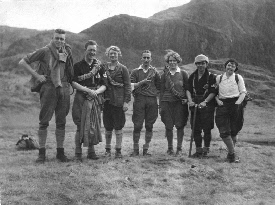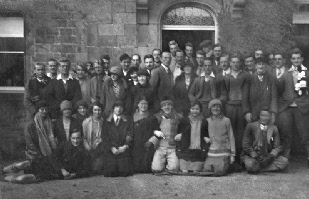


Originally club membership was mainly concentrated along the Manchester – Sheffield axis, also a ‘London’ section. Now we are widely distributed throughout the U.K. with representation in Edinburgh in the North, Cambridge in the East, Swansea in the West, and the Channel islands in the South. And now two members are resident in Australia, yet regularly manage to attend Meets at Seatoller !
In recent times the club membership has fluctuated between 35 and 50. We have two fixed Meets a year at Seatoller at Easter and in October. Other Meets are arranged in various parts of the UK as members see fit. The club has a long association with Seatoller and the Meets at the house are seen as pivotal in maintaining the club identity.
During the 1920’s J E B (Jerry) Wright, the Lakeland Mountain Guide, based himself at Seatoller House for a large part of the year and ran rock climbing courses and holidays. George Starkey, among others, had assisted with these courses and had also led walking holidays for the Co-operative Holidays Association (CHA).
The pair became the moving forces behind the launch of the new club and organized a meeting of interested potential members on 16/17 November 1929. That meeting agreed, subject to the approval of the CHA General Committee, to form the CHA Mountaineering Club, and this was ratified on 10th January 1930. That first year 125 people joined the Club and the children and grandchildren of a number of them are still involved.
An early CHA M.C. / Tricouni group photo. Left to right, Bobby Files, Jerry Wright, ‘Bill’ Marston,George Starkey, Mary Files (later Starkey), Hal Eccles, Mary Green (later Ling).

Eventually friction developed between the CHA management and the climbing section and in 1933 the Club broke away from the CHA, renamed itself the Tricouni Club and reaffirmed Seatoller House as one of its bases.
The Swiss watchmaker, (and climber), Felix Genecand, nicknamed ‘Tricouni’ after his favourite Geneva climb of the same name, which in turn was named in honour of a famous talented Italian guide, developed, patented and manufactured the toothed rock climbing nail which all serious climbers of the day used as a matter of choice.
‘Tricouni’ was so delighted that someone had named a club after him that he presented the Club with members’ badges fashioned from Tricouni nails. Although the company was sold on, it still makes versions of its nails – mainly used by American lumberjacks, - and also innovative lightweight crampons.
16/17 November 1929. Photo of CHA Mountaineering Club members at their very first ’Meet’ at Birchfields, Hope Valley, Derbyshire.
Apart from WW2 when, notably, one member managed to find time to climb in the Atlas Mountains during the North Africa campaign, the Club has continued active to this day. In more recent years members have climbed and walked in most parts of Europe, North and South America, the Himalayas and South East Asia. Despite all this activity the Club has a good safety record, only suffering one related fatality which was as far back as January 1933.

The newly formed CHA Mountaineering Club on Win Hill, Derbyshire, November 1929
Click any image to see a larger view
A Tricouni edge nail


